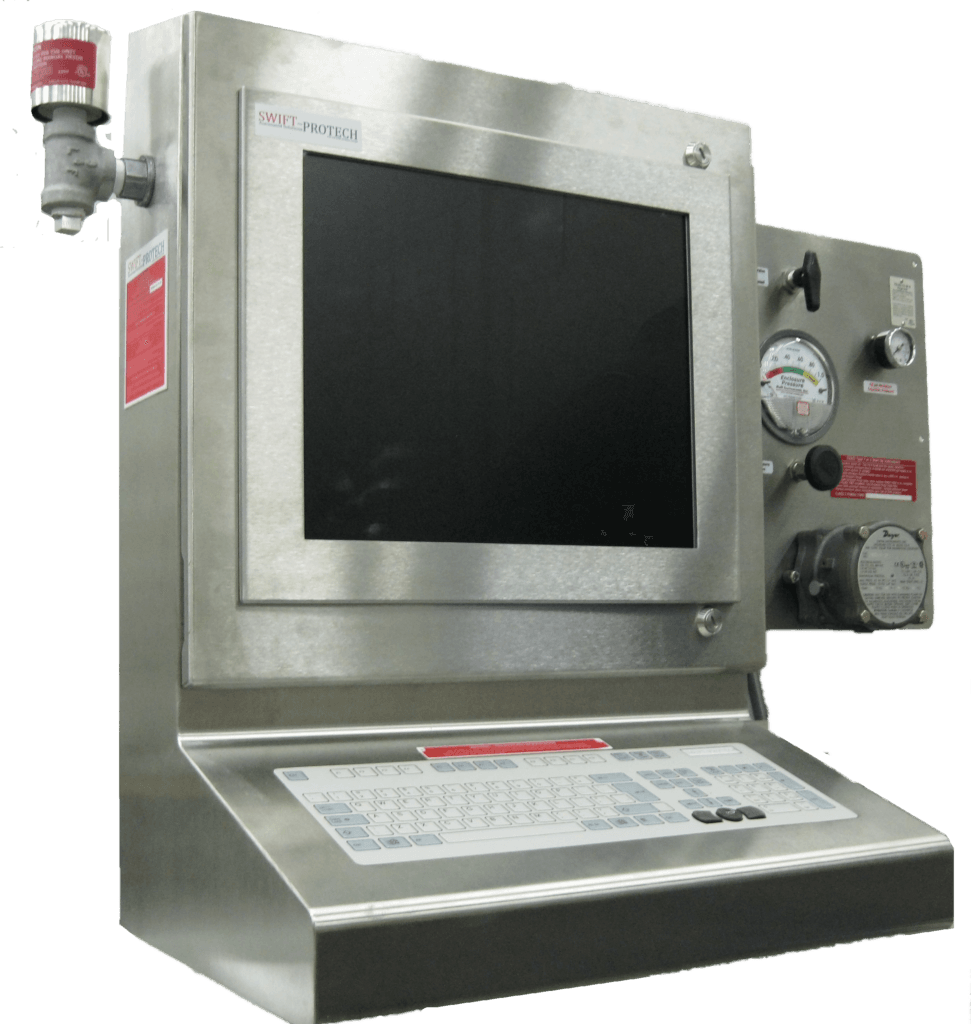Hazardous Location Ratings
For Class 1 And Class 2Electrical equipment that must be installed in such classified locations should be specially designed and tested to ensure it does not initiate an explosion, due to arcing contacts or high surface temperature of equipment. A household light switch may emit a small, harmless visible spark when switching. In an ordinary atmosphere this arc is of no concern, but if a flammable vapor is present, the arc might start an explosion.
Class I, Division 1 classified locations
Class 1 Division 1 areas are areas where ignitable concentrations of flammable gases, vapors or liquids exist under normal operating conditions. Because these volatile substances are constantly present, it is important that equipment has safety features which actively reduce the risk of equipment failure. For this, we recommend purged workstations with rapid exchange over non-incendive and intrinsically safe workstations as they constantly monitor for ingressed vapors or liquids and will immediately cut power if there is a risk to users or the facility.
Class I, Division 2 classified locations
An area where ignitable concentrations of flammable gases, vapors or liquids are not likely to exist under normal operating conditions. In these areas, explosive or flammable gas, vapor or liquids would only be present under abnormal conditions such as equipment failures or leaks. For these areas, purged workstations (typically a Z-purge) are still the best choices when the added protection of rapid exchange isn’t needed.
Class II, Division 1 classified locations
An area where ignitable concentrations of combustible dust is in suspension the ambient environment under normal operating conditions. Like Class 1 Division 1 environments, the consistent danger of airborne combustibles calls for a higher level of active protection.
Class II, Division 2 classified locations
In Class II Division 2, combustible dust will not normally be in suspension in the air in quantities sufficient to produce explosive or ignitable mixtures, and dust accumulations will normally be insufficient to interfere with the normal operation of electric equipment or other apparatus, but combustible dust may be present as a result of infrequent malfunctioning equipment.
For more information about Swift-Protech’s Class 1 and Class 2 products, download datasheets, look at workstation configurations, and more on our workstation page.
You can also find information about our complete line of workstations, keyboards, pointing devices, and monitors by following the links above or using the navigation menu at the top of the page.



